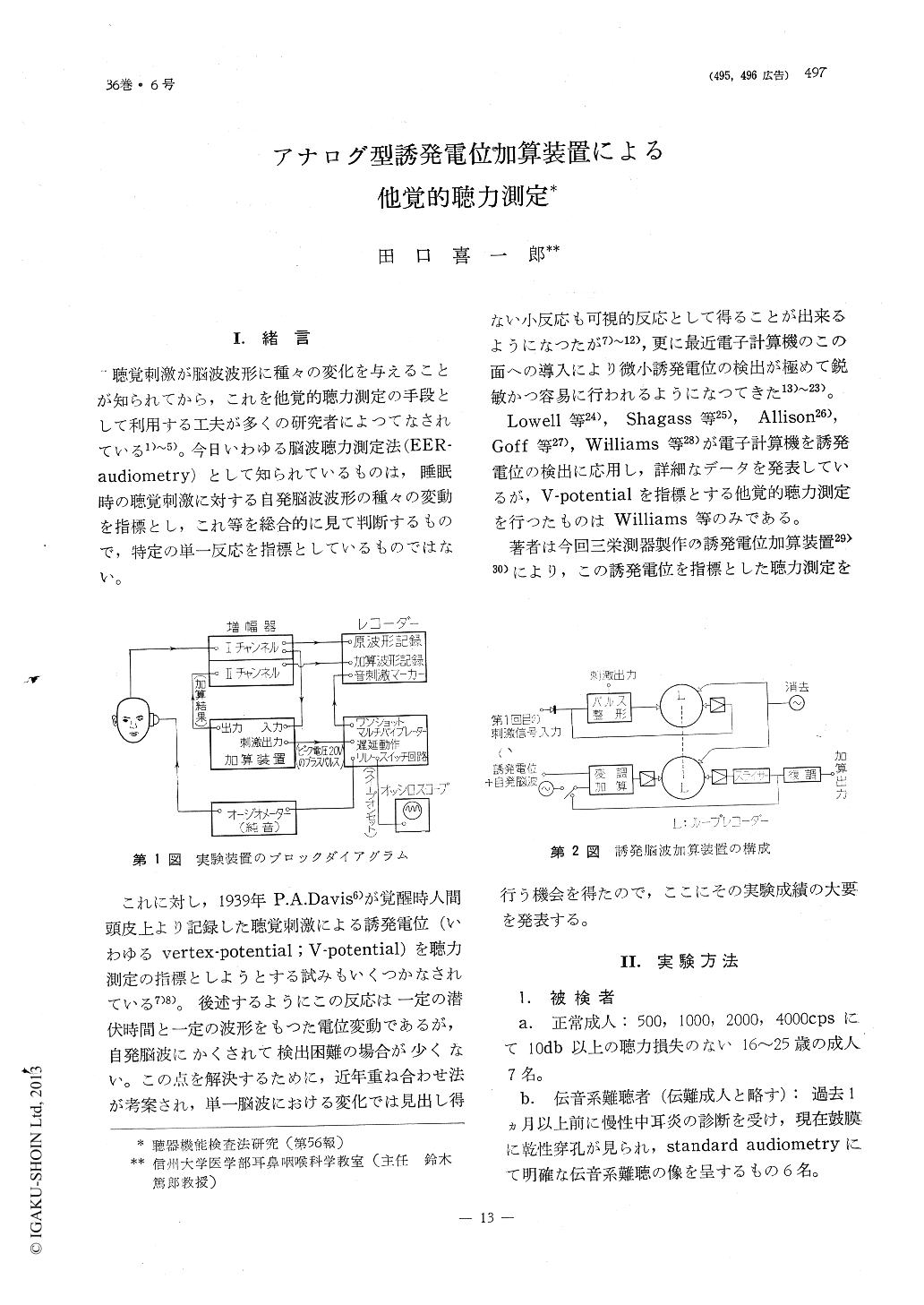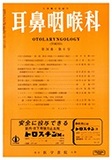Japanese
English
- 有料閲覧
- Abstract 文献概要
- 1ページ目 Look Inside
Ⅰ.緒言
聴覚刺激が脳波波形に種々の変化を与えることが知られてから,これを他覚的聴力測定の手段として利用する工夫が多くの研究者によつてなされている1)〜5)。今日いわゆる脳波聴力測定法(EER-audiometry)として知られているものは,睡眠時の聴覚刺激に対する自発脳波波形の種々の変動を指標とし,これ等を総合的に見て判断するもので,特定の単一反応を指標としているものではない。
これに対し,1939年P. A. Davis6)が覚醒時人間頭皮上より記録した聴覚刺激による誘発電位(いわゆるvertex-potential;V-potential)を聴力測定の指標としようとする試みもいくつかなされている7)8)。後述するようにこの反応は一定の潜伏時間と一定の波形をもつた電位変動であるが,自発脳波にかくされて検出困難の場合が少くない。この点を解決するために,近年重ね合わせ法が考案され,単一脳波における変化では見出し得ない小反応も可視的反応として得ることが出来るようになつたが7)〜12),更に最近電子計算機のこの面への導入により微小誘発電位の検出が極めて鋭敏かつ容易に行われるようになつてきた13)〜23)。
Hearing tests were conducted with averageresponse computor with v-potential serving as indicator; following results were obtained.
1) Basic types of v-potential consisted of 3 phases of waves; negative (N1) positive (P2) and negative (N2).
2) The amplitude and occurrence of this potential are found to be smaller in children aged below 10 as compared to that of the adult. Its occurrence in adults appeared to have 20 db threshold and 100% positive, whereas in children below the age 10 equal results were obtained at 40 db threshold.
3) The latent period of the potential was 60 msec for both adults and children.
4) When the stimulation as the threshold level was given, the response was more easily detectable by the summation method than by the superimposition method, whereas with the supraliminar stimulations, no difference in the detectability of the response was found between the two methods.
5) The time element in the formation of potential could be detected in some adults, whereas there were none among children.

Copyright © 1964, Igaku-Shoin Ltd. All rights reserved.


